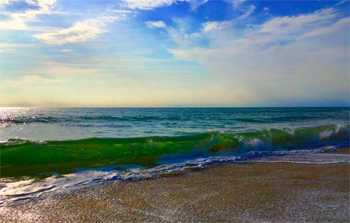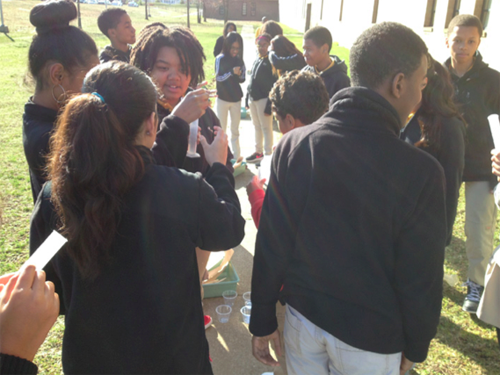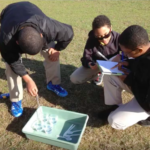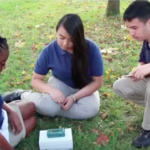
Water, Water Everywhere
This program teaches participants how to assess basic water quality of their local water bodies through scientific experiments.
Basic Information
- Programs are either one or two hours in length (can be modified for forty-five minute School assemblies).
- Each program is inquiry-based, interactive, and has a fieldwork component.
- Maximum student number: 35
- Programs satisfy K-12 standards in Life, Physical, and Earth Science.
- Objectives (For Two-Hour Workshop)
- Learn and apply water local water body’s importance in hydrologic cycle
- Learn the relevance and proportions of fresh water to salt water, water stored in soil, glaciers, clouds, etc.
- Learn the roles of evaporation, condensation, precipitation in the water cycle and apply these factors in scientific experiments
- Learn how to apply proper scientific protocols in use of instruments in experiments including pH and Electrical Conductivity meters, transparency tubes, et. al.
- Learn how to work in collaborative scientific teams to conduct estimations, observations, and experiments
- Build observational skills using scientifically rigorous protocols
- Learn how to collect, report, and analyze science data
- Subject Matter
- Topic: Hydrologic Cycle, Water quality experiments, (pH, Electrical Conductivity, Water Turbidity, Temperature), their Importance and Role in Ecosystem and Biosphere
- Materials: PowerPoint Presentation, pH and Electrical Conductivity meters, beakers, transparency tubes, thermometers, buckets, ropes, plastic sheeting, spray mist bottles, empty boxes, and other materials to represent topographic land changes sponges, food coloring, protective eyewear and gloves.
- Procedure
- Overview of Earth Satellite Image.
- Explore difference between observation and remote sensing.
- Explore why scientists or anyone might study water bodies
- Explore the hydrologic cycle, its purpose and effect on the planet. Discuss difference between fresh and salt water, available water vs. water in storage (soil, polar caps, glaciers, etc.).
- Explore topographic effect of precipitation in a watershed.
- Conduct interactive “Where Does the Water Go?” activity
- Create a watershed and use spray mist bottles to postulate and explore how water travels through a watershed. Add impediments like pollutants (food coloring) to estimate and verify water routes.
- Conduct interactive “Where Does the Water Go?” activity
- Explore and identify water characteristics (pH, conductivity, turbidity, temperature, etc.)
- Identify four study areas for experimentation (note: longer workshops incorporate dissolved oxygen, alkalinity testing, et. al.)
- Water temperature (surface and depth)
- Water transparency/turbidity
- Water pH
- Water electrical conductivity
- Interactive question and answer – student-generated discussion on science of the instruments and water quality indicators.
- Identify four study areas for experimentation (note: longer workshops incorporate dissolved oxygen, alkalinity testing, et. al.)
- Discussion of science protocols
- Discussion and instruction of all science experiments and their relationship to the local environment, the watershed, the biome, and the biosphere.
- Instructions on use of instruments for pH, temperature, transparency, and conductivity
- Discussion and instructions on data sheet and proper data reporting and analysis
- Discussion and instruction of all science experiments and their relationship to the local environment, the watershed, the biome, and the biosphere.
- Fieldwork (For Day-long Seminar)
- Working in collaborative science groups, students conduct all science experiments on local water body (pH, temperature, transparency, and conductivity)
- Students record data following proper protocol procedures
- Working in collaborative science groups, students conduct all science experiments on local water body (pH, temperature, transparency, and conductivity)
- Students report data and enter data into database for analysis (For Day-long Seminar)
- Students graph and analyze data and lead discussion on viability of data, outliers, and conclusions.
- Overview of Earth Satellite Image.

Science experiments students will complete during the program include:
- Surface water temperature
- Water transparency
- Water Electrical Conductivity
- pH
Our Programs
|
|
|
|
|



